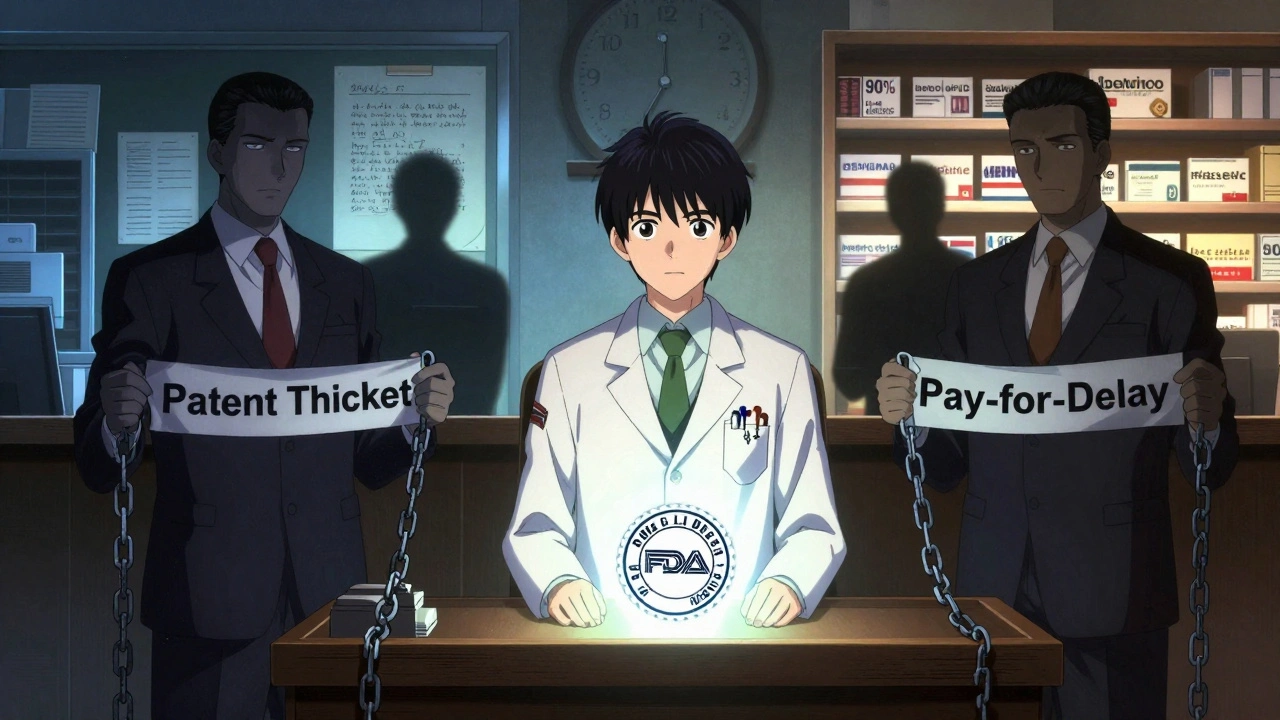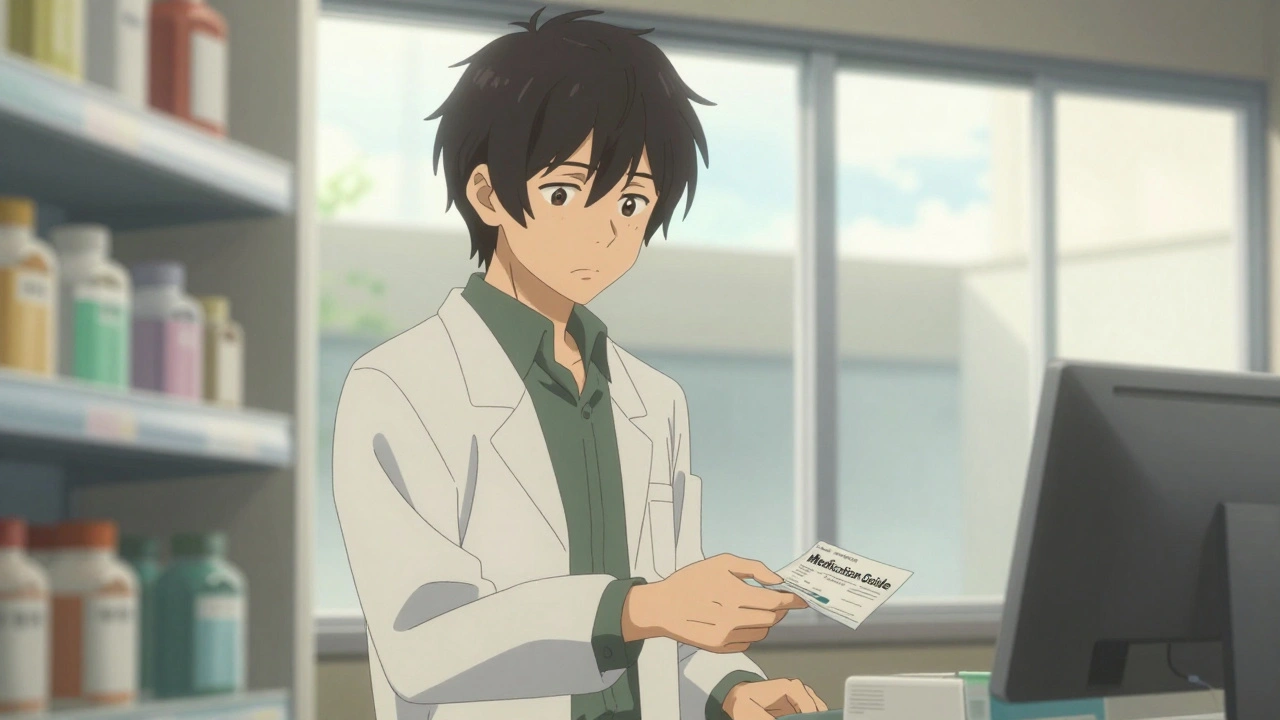Colorectal cancer is one of the most preventable cancers-if you know when and how to get screened. In 2021, major health groups finally aligned on a simple but powerful rule: start screening at 45. That’s not a suggestion. It’s now the standard. And for good reason. Rates of colorectal cancer in people under 50 have been climbing for decades, with rectal cancer rising faster than any other subtype. The good news? Catching it early through colonoscopy can stop it before it turns deadly. The better news? If it’s found early, survival rates jump from under 15% to over 95%.
Why Screening Starts at 45 Now
Before 2021, most guidelines said to wait until 50. But data didn’t lie. Between 1995 and 2019, colorectal cancer incidence in adults under 50 rose by 2.2% every year. By 2020, the American Cancer Society had already shifted its recommendation to 45. The U.S. Preventive Services Task Force followed in 2021, making it official. Now, the CDC, the American College of Gastroenterology, and Medicare all agree: if you’re 45 to 75 and at average risk, you need screening.
Why not earlier? Because the risk doesn’t spike until mid-40s. Why not later? Because screening after 75 offers diminishing returns unless you’re in excellent health and have never been screened. For those 76 to 85, the decision should be personal-talk to your doctor about your life expectancy, past results, and overall health.
Some groups are at higher risk. African Americans have a 20% higher incidence and 40% higher death rate from colorectal cancer. People with a family history, inflammatory bowel disease, or inherited syndromes like Lynch syndrome may need to start even before 45-and usually need colonoscopy, not stool tests.
Colonoscopy: The Gold Standard
Colonoscopy isn’t perfect, but it’s the most effective tool we have. It doesn’t just find cancer-it stops it. During the procedure, doctors remove precancerous polyps. That’s prevention, not just detection. Studies show colonoscopy cuts colorectal cancer incidence by 67% and death by 65% over a lifetime.
The catch? It’s invasive. You need a full bowel prep-usually a large volume of salty liquid that makes you run to the bathroom for hours. Many people say it’s the worst part. But the procedure itself? Most get sedated. You wake up with no memory of it. And the benefits? Huge.
Colonoscopy is good for 10 years if everything looks normal. If you have a few small polyps, you might need to come back in 3 to 5 years. If you have many or large polyps, you could need it every year or two. The key is follow-up. Skipping your next colonoscopy because you felt fine last time is how cancers sneak up.
Complications are rare-about 1 in every 1,000 to 1,500 procedures-but they happen. Perforation (a tear in the colon) and bleeding after polyp removal are the main risks. That’s why choosing an experienced endoscopist matters. Look for one with an adenoma detection rate above 25%-that’s the benchmark for quality.

Alternatives to Colonoscopy
Not everyone wants a colonoscopy. That’s okay. There are other options, each with trade-offs.
- Stool FIT test: This checks for hidden blood in your poop. It’s simple-you collect a sample at home, mail it in. It’s cheap, non-invasive, and catches about 79-88% of cancers. But it misses most polyps. You need it every year. If it’s positive, you still need a colonoscopy. Adherence is higher than colonoscopy in underserved communities.
- Multi-target stool DNA test (sDNA-FIT): This looks for DNA changes and blood. It’s more sensitive than FIT-catches 92% of cancers-but has more false positives. That means more unnecessary colonoscopies. It’s good every 3 years. But it’s expensive and not always covered by insurance.
- Flexible sigmoidoscopy: This checks only the lower third of the colon. Less prep, less risk, but it misses cancers higher up. It’s done every 5 years, often with annual FIT. Still reduces death by 28%.
- CT colonography (virtual colonoscopy): Uses X-rays to create a 3D image. No sedation, no scope. But you still need the prep. And if they find anything, you need a colonoscopy anyway. Plus, you get radiation exposure-about the same as a chest CT.
Stool tests work best when used consistently. People forget. They lose the kit. They don’t read the instructions. That’s why colonoscopy still leads in effectiveness. But for those who won’t do a colonoscopy, any test is better than none.
What Happens If Cancer Is Found?
If a tumor is found during screening, the next step is staging. Is it only in the colon? Has it spread to lymph nodes? To the liver or lungs? That determines treatment.
Stage I: Cancer is small and confined to the inner layers of the colon. Surgery alone is often enough. No chemo needed. 95%+ 5-year survival.
Stage II: Cancer has grown into deeper layers but hasn’t reached lymph nodes. Surgery is still the main treatment. Chemo may be offered if high-risk features are present-like poor cell differentiation or blocked bowel.
Stage III: Cancer has reached nearby lymph nodes. Surgery + chemotherapy is standard. The most common chemo regimens are FOLFOX (5-FU, leucovorin, oxaliplatin) or CAPOX (capecitabine, oxaliplatin). These are given over 6 months. Side effects include nerve damage (tingling in hands/feet), fatigue, nausea, and lowered blood counts. Many patients get through it with support.
Stage IV: Cancer has spread to distant organs. Surgery may still be done to remove the main tumor, but chemo becomes the main tool. Regimens include FOLFOX, FOLFIRI (5-FU, leucovorin, irinotecan), or targeted therapies like cetuximab or bevacizumab, often combined with chemo. Survival improves with newer drugs, but it’s rarely cured. Goals shift to extending life and keeping quality high.
Chemotherapy isn’t one-size-fits-all. Genetic testing of the tumor (like KRAS, NRAS, BRAF mutations) tells doctors which drugs will work. Some patients get immunotherapy if their cancer has high microsatellite instability (MSI-H)-a sign the immune system might respond.

Barriers to Screening-And How to Beat Them
Despite all the evidence, only 67% of eligible adults in the U.S. are up to date with screening. Why?
- Cost and access: Uninsured people are half as likely to get screened. Even with Medicare, some don’t know it’s free under preventive care.
- Fear and discomfort: The prep is unpleasant. The idea of a scope is scary. Misinformation spreads online.
- System gaps: Primary care doctors don’t always follow up. Wait times for colonoscopy can be 60+ days in safety-net hospitals.
- Disparities: African Americans, rural residents, and low-income groups have lower screening rates-even though they’re at higher risk.
Effective solutions exist. Automated reminders via text or mail boost adherence by 28%. Patient navigators-real people who walk you through the process-cut no-shows by 42%. Team-based care, where nurses or medical assistants handle prep instructions and scheduling, works better than relying on busy doctors.
If you’re unsure where to start, call your primary care provider. Ask: “Am I due for colorectal cancer screening?” If you’re 45 or older and haven’t been screened, that’s your next appointment.
What’s Next? Blood Tests and AI
The future is coming. Blood-based tests like Guardant SHIELD are showing promise in trials-detecting cancer with 83% accuracy. They’re not ready for prime time yet, but they could one day replace stool tests for many people.
AI is already here. Systems like GI Genius use real-time algorithms to flag polyps during colonoscopy. One study showed they increase detection by 14%. That means more polyps found, fewer missed cancers.
Down the line, we may see personalized screening: your risk level, genetics, diet, and lifestyle used to decide if you need a colonoscopy every 10 years-or every 3. That could reduce unnecessary procedures by 30% without missing cancers.
But for now, the best thing you can do is get screened. If you’re 45 or older, don’t wait for symptoms. Colon cancer often has none until it’s advanced. By the time you feel pain, bloating, or bleeding, it’s too late for easy treatment.
Screening saves lives. Not just in statistics. In real people-your neighbor, your parent, your friend. It’s not glamorous. It’s not easy. But it’s simple. And it works.






Andrew Baggley
November 19, 2025 AT 13:13Just had my first colonoscopy at 46-yeah, the prep was brutal, like drinking saltwater through a straw while your gut rebels. But I woke up with zero memory of it, and the doc pulled out three polyps. Three! One was pre-cancerous. If I’d waited until 50, who knows? This isn’t scary-it’s a lifesaving checklist. Do it. No excuses.
Also, if you’re scared of the scope, ask for Propofol. It’s not always offered, but it’s the gold standard for sedation. No grogginess, no nausea. Worth asking for.
Reema Al-Zaheri
November 21, 2025 AT 01:04It is imperative to note that the American Cancer Society’s 2021 guideline revision, which lowered the recommended screening age to 45, was based on longitudinal epidemiological data demonstrating a statistically significant annual increase of 2.2% in colorectal cancer incidence among individuals under the age of 50, from 1995 to 2019. Moreover, the U.S. Preventive Services Task Force’s endorsement of this change was grounded in a meta-analysis of cohort studies showing a 67% reduction in incidence and a 65% reduction in mortality associated with colonoscopy-based screening. It is also critical to recognize that disparities persist: African American populations exhibit a 20% higher incidence and a 40% higher mortality rate, underscoring the necessity of equitable access to screening services.
Michael Salmon
November 21, 2025 AT 18:04Let’s be real-this whole ‘screen at 45’ thing is just corporate medicine pushing procedures. Colonoscopies are a $10K cash cow for hospitals. And don’t get me started on the ‘stool tests are less effective’ narrative-those are cheaper, safer, and most people actually do them. Meanwhile, the real cause? Processed meat, sedentary lifestyles, and Big Pharma pushing chemo. They want you scared so you’ll sign up for the next procedure.
And yes, I’ve read the studies. They’re funded by GI equipment manufacturers. Wake up.
Dion Hetemi
November 22, 2025 AT 07:43Michael Salmon is right about the money behind this-but he’s missing the forest for the trees. Look, I work in oncology. I’ve seen 38-year-olds with stage IV colon cancer because they thought ‘it’s just hemorrhoids.’
Yes, colonoscopies are expensive. But the alternative? A 22-year-old on a ventilator because they ignored bloating for six months. The data isn’t a conspiracy-it’s survival. And if you think stool tests are a silver bullet, you’ve never seen a false negative. I’ve seen them. They’re heartbreaking.
Richard Risemberg
November 22, 2025 AT 10:19Hey-if you’re reading this and you’re 45+, I’m not here to shame you. I’m here to say: I used to be the guy who said ‘I’ll do it next year.’ Then my cousin, 44, got diagnosed with stage III. He’s on chemo now. He can’t eat his favorite tacos. He’s got neuropathy from oxaliplatin. He cries every time he sees his daughter.
Screening isn’t about fear. It’s about showing up-for yourself, for your family, for the people who love you. You don’t need to be brave. You just need to be consistent. The prep sucks? So does cancer. The scope feels weird? So does losing someone you love.
Call your doctor. Today. Just say: ‘I’m due.’ That’s it. No guilt. No drama. Just action.
And if you’re scared? Bring a friend. Or a playlist. Or a stress ball. Do whatever it takes. Your future self will thank you.
Andrew Montandon
November 23, 2025 AT 06:57For those considering alternatives: the FIT test is 79-88% sensitive for cancer-but only 25% for advanced polyps. That means nearly 3 out of 4 precancerous growths are missed. And sDNA-FIT? It’s 92% sensitive, but has a 10% false positive rate-meaning 1 in 10 people get a colonoscopy they don’t need. That’s a lot of unnecessary anxiety, prep, and cost.
Colonoscopy is the only test that removes the threat before it becomes cancer. That’s prevention. The rest? Detection. Big difference.
Also: if you’re over 75, talk to your doctor. Don’t assume it’s ‘too late.’ I had a 79-year-old patient last month who’d never been screened. Found a large adenoma. Removed it. He’s now cancer-free. Age isn’t a barrier-health and history are.
Chuck Coffer
November 24, 2025 AT 03:59So… you’re telling me I need to drink a gallon of brine, get poked with a camera, and pay $2,000-just because I turned 45?
Meanwhile, my neighbor, 52, eats nothing but bacon and soda, smokes, and never screens-and he’s fine.
What’s the real risk? Or is this just another way to make people feel guilty for not being perfect?
Marjorie Antoniou
November 25, 2025 AT 23:38Chuck, I hear you. I used to think the same thing. Then my dad died at 51 from colon cancer-diagnosed after he started bleeding. He didn’t have symptoms before. He didn’t think it was ‘serious.’
It’s not about guilt. It’s about knowing the odds. And if you’re not ready for a colonoscopy, start with a FIT kit. Do it at home. Mail it in. It’s free with Medicare. If it’s positive, you’ll get a colonoscopy anyway. But if it’s negative? You’ve got three years of peace.
You don’t have to do the hard thing today. But do something. Even a little.
Frank Dahlmeyer
November 27, 2025 AT 08:53Let me tell you about my mate, Dave-he’s 50, lives in rural Wales, works on a farm, and hasn’t seen a doctor since 2012. He thought colon cancer was something that happened to ‘city folk.’ Then he got a FIT kit from his GP’s automated reminder system. Positive. Turned out he had a large polyp blocking half his colon. They removed it. No chemo. No surgery beyond the scope. He’s back on his tractor next week.
That’s the thing nobody talks about: screening doesn’t just save lives-it saves livelihoods. Dave’s family didn’t lose their main income. His kids didn’t lose their dad. And he didn’t need to go through six months of chemo because he got screened.
Automated reminders? They work. Patient navigators? They work. Nurses calling you? They work. You don’t need to be a health expert. You just need someone to remind you-and then make it easy.
And if you’re worried about cost? In the U.S., Medicare covers it 100% under preventive care. In the UK, it’s free. In Canada, Australia, Germany? Free. This isn’t a luxury. It’s basic care. And if you’re skipping it because you think you’re ‘fine’-you’re gambling with the only body you’ve got.
Do the thing. Even if it’s just a stool test. Do it. Now. Your future self is begging you.